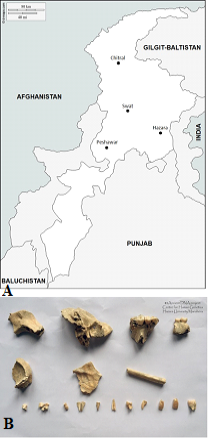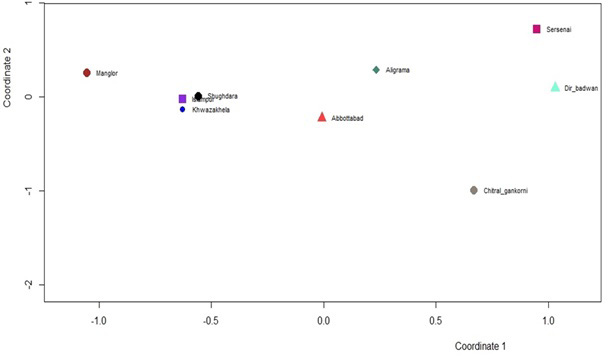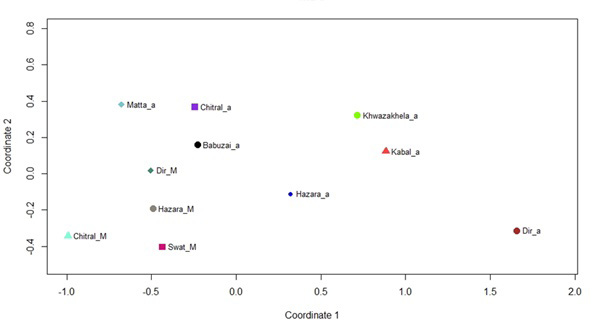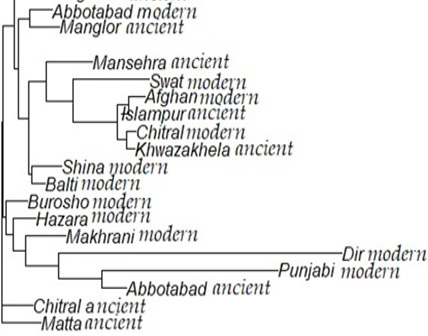Biological Linkage of Ancient and Modern Populations of Northwestern Pakistan through their Mitochondrial Profiles
Biological Linkage of Ancient and Modern Populations of Northwestern Pakistan through their Mitochondrial Profiles
Nasir Ali1,2,6, Muhammad Ilyas2,3, Nazia Akbar1,2*, Gohar Rahman2, Shakirullah Khan4, Mujaddad Ur Rehman6, Abdul Samad5, Habib Ahmad1,2 and Bibi Nazia Murtaza7*
The map of the Northern and western province of Pakistan named as Khyber Pakhtunkhwa with the regions shown from where the ancient human specimens (A) and modern samples (B) were collected.
Multidimensional scaling analysis for the ancient samples to further explain their genetic relationship among the ancients. Aligrama, Dir Badwan, Abbottabad and Sersenai are close to each other, except for Chitral Gankorni.
Comparing the modern population and the ancient people, Ancient Khwazakhela and ancient Kabal are the nearest tehsils and are closer than others which suggests that the lineage of these individuals are different. Ancient Matta Ancient Babuzai and ancient Chitral are very close to each other in which Modern Hazara, Modern Swat and Modern Dir populations are concentrated. The current population of Hazara is the largest example of population migration from the Swat region where it represents a strong connection with the existing population of Swat and Dir.
The phylogenetic tree was constructed using MEGA7 that shows the evolutionary relationship of populations in current study to those reported previously from other regions of Pakistan.














